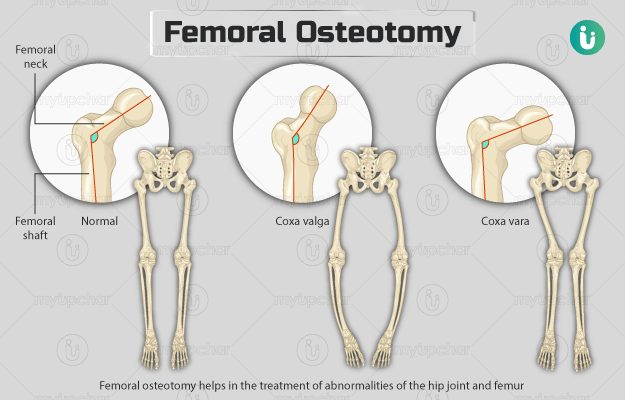Summary
Femoral osteotomy is a surgery performed to treat abnormalities in the hips joint or femur.
Before the surgery, the doctor will take your complete medical history and order a few diagnostic and imaging tests. The surgery will be done under general anaesthesia. During the surgery, an incision will be made on the outer side of your hips, a section of your femur will be cut off, and the bone will be placed in the correct location.
After the surgery, a hospital stay of about four to five days will be required, and physical therapy is needed. You can walk in about six weeks, but initially, you will need a walker to provide support.
A follow-up will take place in about one to two weeks; however, contact your doctor if you notice symptoms such as fever or redness and swelling at the operation site.










































